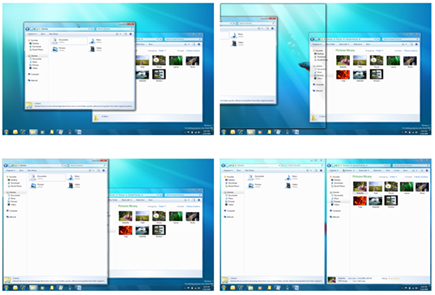Effortless Multitasking: Unveiling the Power of Windows 7 Snap

Introduction:
In the ever-evolving landscape of operating systems, Windows 7 stands as a testament to Microsoft’s commitment to enhancing user experience. One of its standout features, the Windows 7 Snap, revolutionizes the way users navigate and organize their tasks, ushering in an era of effortless multitasking. This article delves into the intricacies of Windows 7 Snap, exploring its capabilities and how it empowers users to boost productivity and streamline their digital workflows.
Understanding Windows 7 Snap:
At the core of Windows 7 Snap is the concept of intuitive multitasking. Unlike its predecessors, Windows 7 introduces a seamless way to manage multiple windows on the desktop. The Snap feature allows users to effortlessly organize and compare applications side by side, providing a dynamic and efficient workspace.
How Windows 7 Snap Works:
Windows 7 Snap operates on a simple yet powerful principle: drag and drop. Users can easily snap windows to the edges of the screen, automatically resizing them to fill half of the display. This functionality is particularly useful for comparing documents, spreadsheets, or any content that benefits from a side-by-side view.
To activate Snap, users can drag a window to the left or right edge of the screen, causing it to automatically resize and occupy half of the available space. This feature is not limited to just two windows; users can snap up to four windows by dragging them to the corners of the screen, creating a quadrant layout for enhanced multitasking.
Enhanced Productivity with Snap:
Windows 7 Snap isn’t just about visual organization; it significantly enhances productivity by facilitating quick and easy navigation between applications. With multiple windows open simultaneously, users can seamlessly switch between tasks without the need to minimize or resize windows manually.
This feature proves invaluable for professionals who rely on multitasking, such as content creators, analysts, or anyone working with complex data sets. The ability to have reference materials, research, or communication tools side by side streamlines workflows, reducing the time spent switching between applications.
Customizing the Snap Experience:
Windows 7 Snap is not a one-size-fits-all solution; it offers customization options to adapt to individual preferences and work styles. Users can fine-tune the snapping behavior by adjusting settings in the Control Panel, tailoring the feature to meet their specific needs.
For instance, users can decide whether windows should automatically maximize when dragged to the top of the screen or remain in their current size. This flexibility ensures that Snap adapts to the user, providing a personalized and efficient multitasking experience.
The Accessibility Factor:
Beyond its productivity benefits, Windows 7 Snap also addresses accessibility concerns. The feature is designed to be user-friendly, with intuitive gestures that make multitasking more accessible for individuals with varying levels of tech proficiency. The drag-and-drop functionality simplifies the process, making it easy for users of all skill levels to harness the power of Snap.
Conclusion:
In the realm of operating systems, Windows 7 Snap stands out as a game-changer for multitasking. Its intuitive design, coupled with customization options, empowers users to create a digital workspace that aligns with their unique needs. By streamlining the organization of multiple applications and enhancing navigation, Windows 7 Snap fosters a more efficient and productive computing experience. As we look back at the legacy of Windows 7, it’s clear that the Snap feature has left an indelible mark on how users approach and manage their digital tasks.





